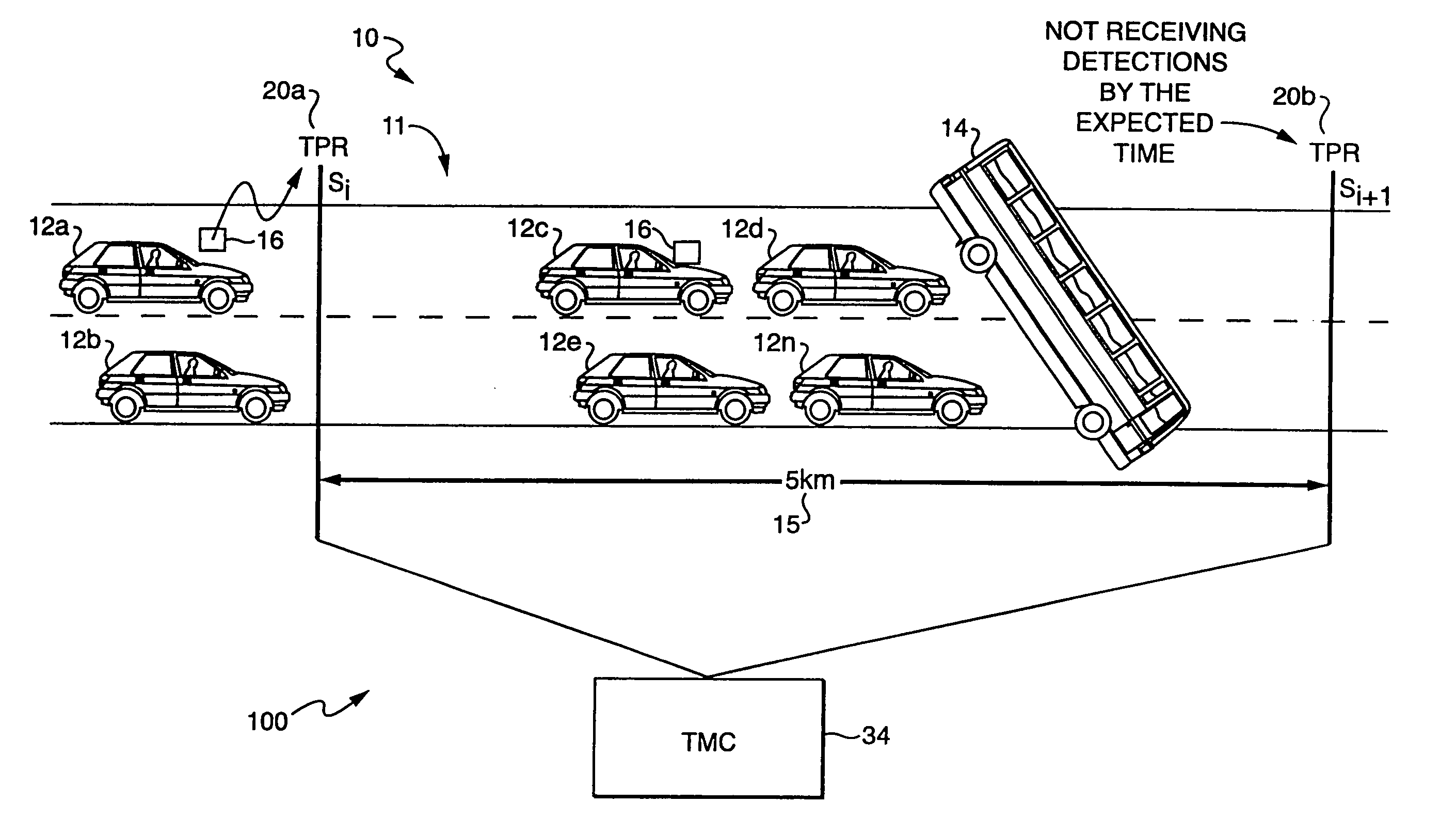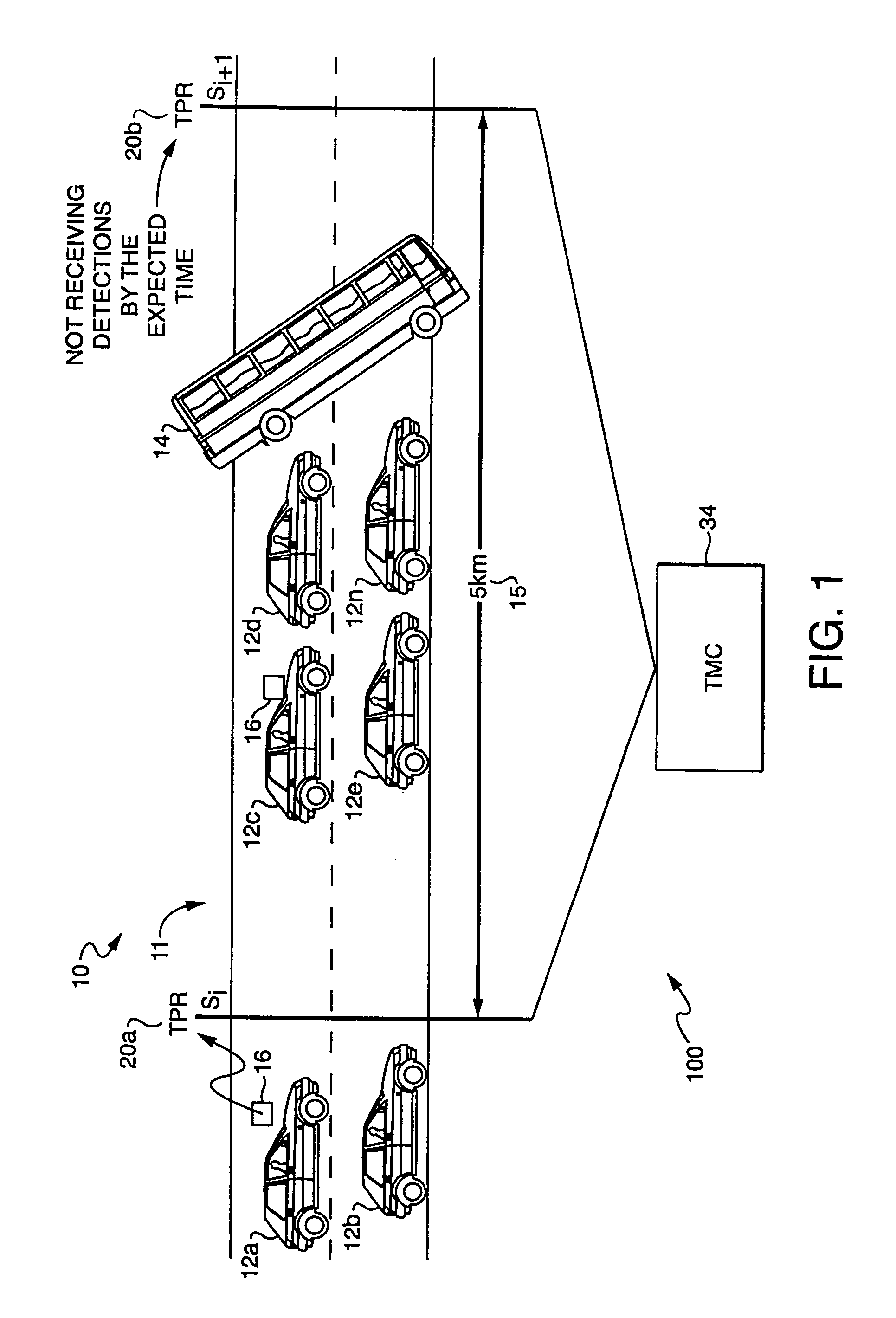Predictive automatic incident detection using automatic vehicle identification
a technology of automatic incident detection and vehicle identification, applied in the field of traffic control systems, can solve the problems of high infrastructure and maintenance costs of close-up sensors, system failure to detect traffic problems on sections without cameras, and system failure to detect traffic problems, etc., to achieve the effect of low traffic volume quickly
- Summary
- Abstract
- Description
- Claims
- Application Information
AI Technical Summary
Benefits of technology
Problems solved by technology
Method used
Image
Examples
Embodiment Construction
[0021]Referring now to FIG. 1, an incident detection system 100 includes a traffic management center (TMC) 34 connected to a plurality of traffic probe readers (TPR's) 20a–20n (generally denoted TPR 20) along a roadway 10 separated by interval 15. The roadway 10 includes a number of segments 11 (generally designated Si 11) which are typically located between a pair of TPR's 20 or other devices that can detect vehicles. It should be appreciated that the length of interval 15 between each pair of TPR's 20 is only approximate and does not have to be uniform between TPR's 20. The interval 15 is set to minimize the required number of TPR's 20 subject to incident detection time constraints. In one embodiment, the interval 15 is set to five kilometers. A plurality of the vehicles 12a–12m (generally denoted vehicles 12) traveling on roadway 10 can each include a transponder 16. Vehicles 12 so equipped can include automobiles, truck, buses, service vehicles and any type of vehicle traveling ...
PUM
 Login to View More
Login to View More Abstract
Description
Claims
Application Information
 Login to View More
Login to View More - R&D
- Intellectual Property
- Life Sciences
- Materials
- Tech Scout
- Unparalleled Data Quality
- Higher Quality Content
- 60% Fewer Hallucinations
Browse by: Latest US Patents, China's latest patents, Technical Efficacy Thesaurus, Application Domain, Technology Topic, Popular Technical Reports.
© 2025 PatSnap. All rights reserved.Legal|Privacy policy|Modern Slavery Act Transparency Statement|Sitemap|About US| Contact US: help@patsnap.com



